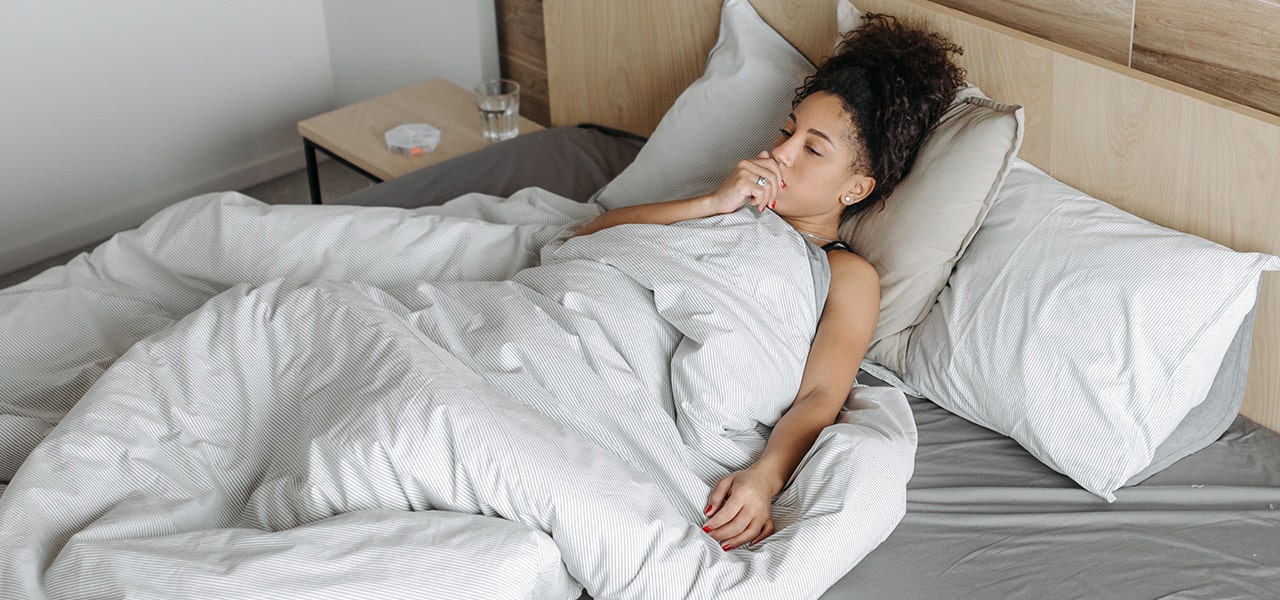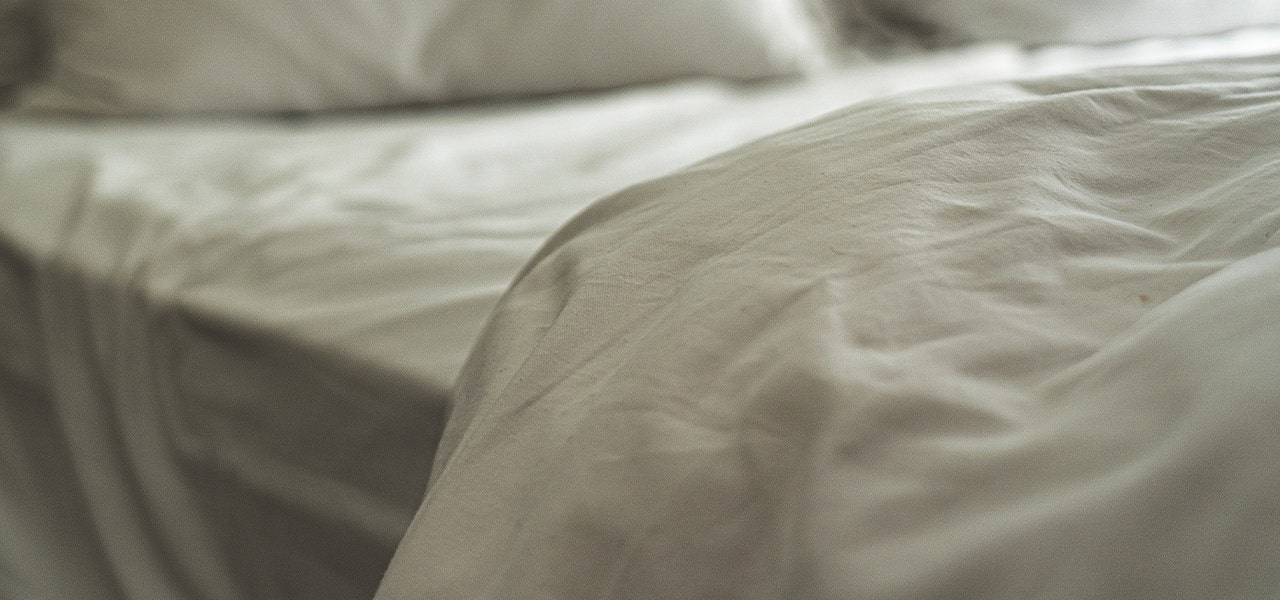With a nickname like “forever chemicals,” polyfluoroalkyl substances (PFAS) sure do sound scary. Spoiler alert: they are scary.
PFAS pose serious threats to both people and planet. Unfortunately, there are thousands of PFAS chemicals, so it's impossible to screen products for even a significant portion of them. In fact, recent data shows that 97% of Americans tested positive or PFAS in their blood. However, you can reduce your PFAS exposure if you understand a few of the basics. What are these forever chemicals? Where are PFAS found? What are the risks of PFAS?
Here’s what you need to know.
First Things First: What Are PFAS?


Per- and polyfluoroalkyl substances (PFAS) are a class of man-made chemicals that have been widely used since the 1940s. They are valued for their water and oil-resistant properties, making them prevalent in products such as non-stick cookware, waterproof textiles, cleaning products, food packaging and more. PFAS can also be found in carpets, furniture and, you guessed it, conventional mattresses.
The problem with PFAS arises from their persistence in the environment and their potential to accumulate in the human body over time. The nickname “forever chemicals” isn’t arbitrary – it’s earned! Once these chemicals are introduced into the body or the environment, they don’t break down. It's important to be aware of these substances so that you can take measures to avoid them – for your health, your family’s health and our collective health, our planet Earth.
PFAS Risks: Health and Environmental Threats
The presence of PFAS in our surroundings raises concerns relating to their adverse human health effects. Studies have linked exposure to PFAS with various health issues, including:
- Hormone disruption
- Immune system impairment
- Liver damage
- Increased risk of certain cancers
- Decreased infant birth weight
- Increased cholesterol levels
And the list goes on. But beyond human health, PFAS are harmful to Mother Nature, too. They can contaminate water supplies, move through soils, and bioaccumulate in fish and other wildlife, leading to widespread environmental pollution. As responsible individuals, it's crucial that we minimize our exposure to these chemicals to protect our own health and the well-being of our ecosystems.
Is Your Family Sleeping on PFAS?


Where are PFAS found? One area where PFAS exposure often goes unnoticed is our bedrooms. Pretty scary, considering we humans sleep for approximately a third of our lives. Yet all too often, mattresses and bedding materials treated with stain or water-resistant coatings contain PFAS.
Like we mentioned, it is not currently possible to screen products for the 5,000+ PFAS chemicals in use today. But, you can limit your exposure to PFAS in your sleep space by opting for GOTS certified organic bedding for you and your kiddos. GOTS does test for and prohibit a select number of PFAS, so it you see the GOTS seal, you know you're at least avoiding those! Similarly, avoid any mattresses and bedding that are treated with stain-resistant coatings. And, when it comes to waterproofing, GOTS-approved polyethylene or polyurethane are your best options.
At Naturepedic, we eliminate as many toxic chemicals from our mattresses and bedding as reasonably possible, and we only use polyethylene or polyurethane for waterproofing. You can read more about our non-toxic approach here.
5 More Tips for Reducing Your PFAS Exposure
Beyond the bedroom, there are lots of hidden sources of PFAS in the home. Here are five tips for reducing your family’s exposure to these forever chemicals.
1. Read the Labels
When purchasing cleaning agents, personal care items and textiles, carefully read the labels to identify potentially harmful materials. You may not see specific indications whether the product does or does not contain perfluorochemicals, but it's always a good idea to get into the habit of reading labels!
Pro tip: Organic alternatives aren’t just the eco-friendlier route – they’re also more likely to contain fewer harmful chemicals like PFAS.
2. Avoid Non-Stick Cookware and Utensils


Replace non-stick cookware coated with PFAS with safer alternatives such as stainless steel, cast iron or ceramic. These options provide effective cooking surfaces without the need for potentially hazardous coatings. Similarly, opting for wooden or stainless-steel utensils instead of non-stick varieties can help you to avoid PFAS contamination.
3. Filter Your Tap Water
Like we mentioned above, one major environmental effect of PFAS is water contamination. To reduce your PFAS exposure, consider installing a high-quality filter for your drinking water. Look for something certified to remove PFAS, such as an activated carbon or reverse osmosis system. Regularly maintain and replace your filter as recommended by its manufacturer to ensure its effectiveness.
4. Minimize Your Use of Stain and Water-Resistant Products
Just like mattresses, textiles marketed as stain or water-resistant often contain PFAS. Assess the necessity of such products in your home and try to minimize their use. Instead of relying on stain-resistant treatments for fabrics, opt for materials that inherently resist stains. When purchasing new carpets, furniture or clothing, choose products labeled as "PFAS-free" if you can find them or inquire with the retailer about their PFAS content.
5. Dispose of PFAS-Containing Items Properly
When getting rid of items known to contain PFAS such as non-stick cookware or stain-resistant textiles, make sure to dispose of them properly. Check with your local waste management authorities to find out the correct procedures for disposal, as PFAS-containing items should not be disposed of in regular trash or poured down the drain.
Cutting PFAS out of your home as much as you can helps to protect your family’s health – but make sure you don’t cause Mother Nature further harm in the process.
Extra Resources for When You're Shopping
Shopping can be pretty intimidating when you consider all the harmful materials that may be lurking in your products. Luckily, there are organizations dedicated to helping consumers make healthy, mindful decisions when shopping. Certifications are a great place to start – look for these ones in particular:
- Global Organic Textile Standard (GOTS) – Ensures that a product is certified organic and marks products that prioritize ecological and social sustainability.
- MADE SAFE® – Certifies products that have been screened against a list of thousands of chemicals known or suspected to be harmful towards human health.
- GREENGUARD® Gold – Tests specifically for chemical emissions from consumer products and materials.
Another great reference for consumers is the Environmental Working Group, which publishes Consumer Guides to help shoppers make more informed decisions and learn whether products have been EWG VERIFIED® for safety. Bonus! Naturepedic recently became the first-ever mattress manufacturer to earn the EWG VERIFIED distinction.
By taking simple yet effective measures to avoid PFAS at home, you can protect your family's health and contribute to a cleaner environment. Unfortunately, “forever chemicals” aren’t the only chemical lurking in your home – learn about other endocrine disruptors here.
 BABY
BABY  KIDS
KIDS  ADULT
ADULT  LEARN
LEARN  STORES
STORES 